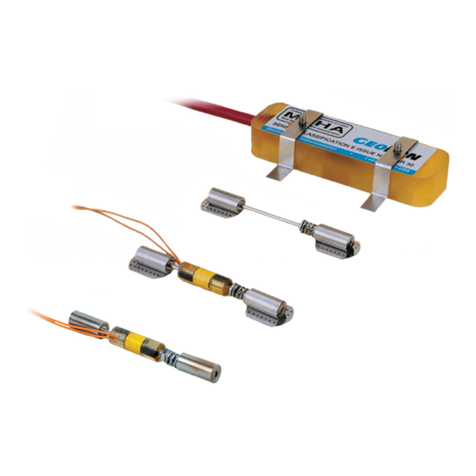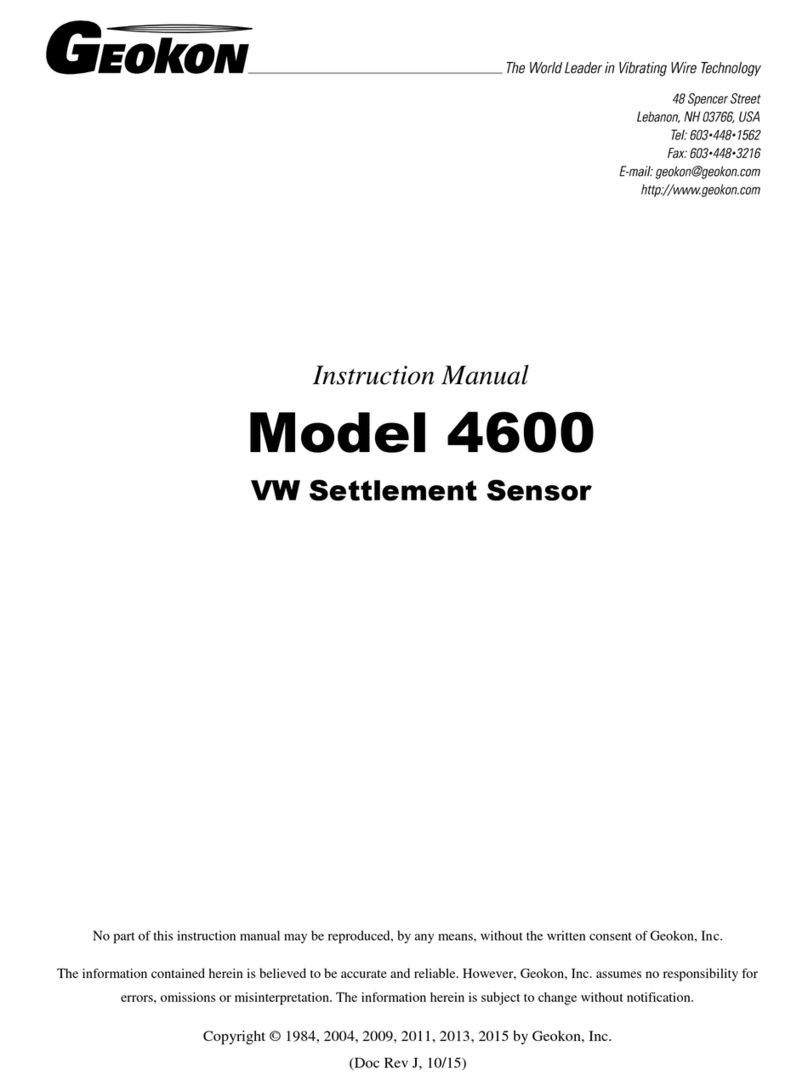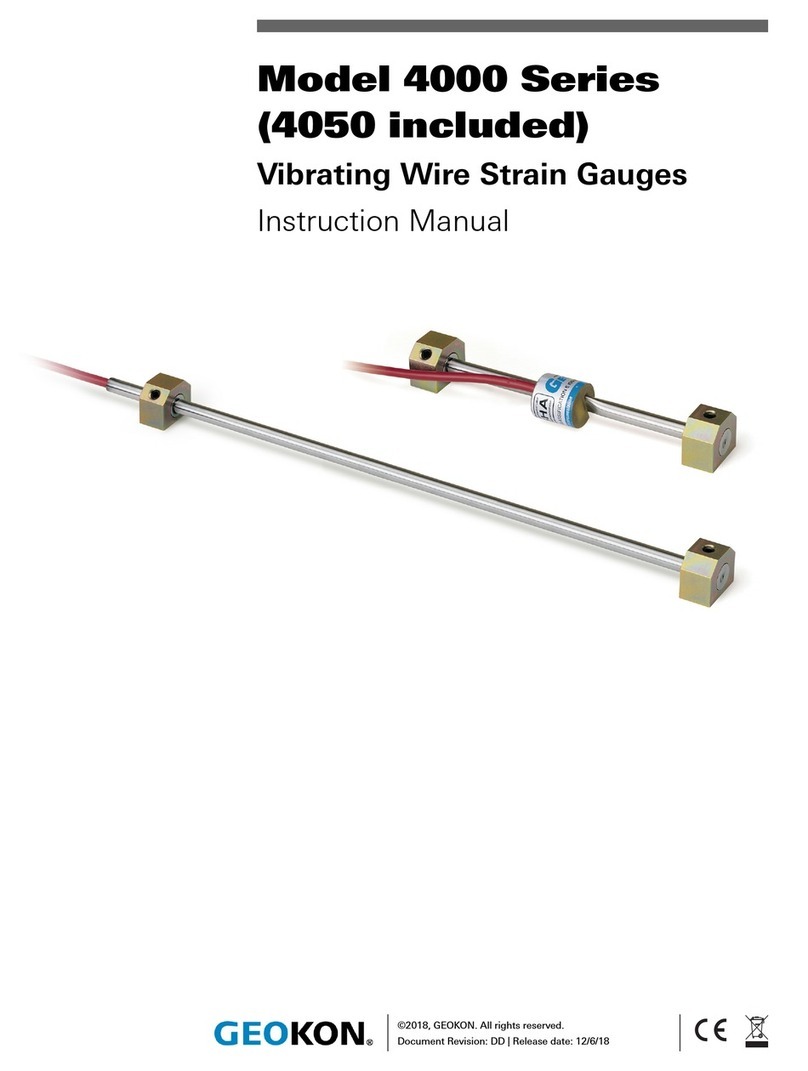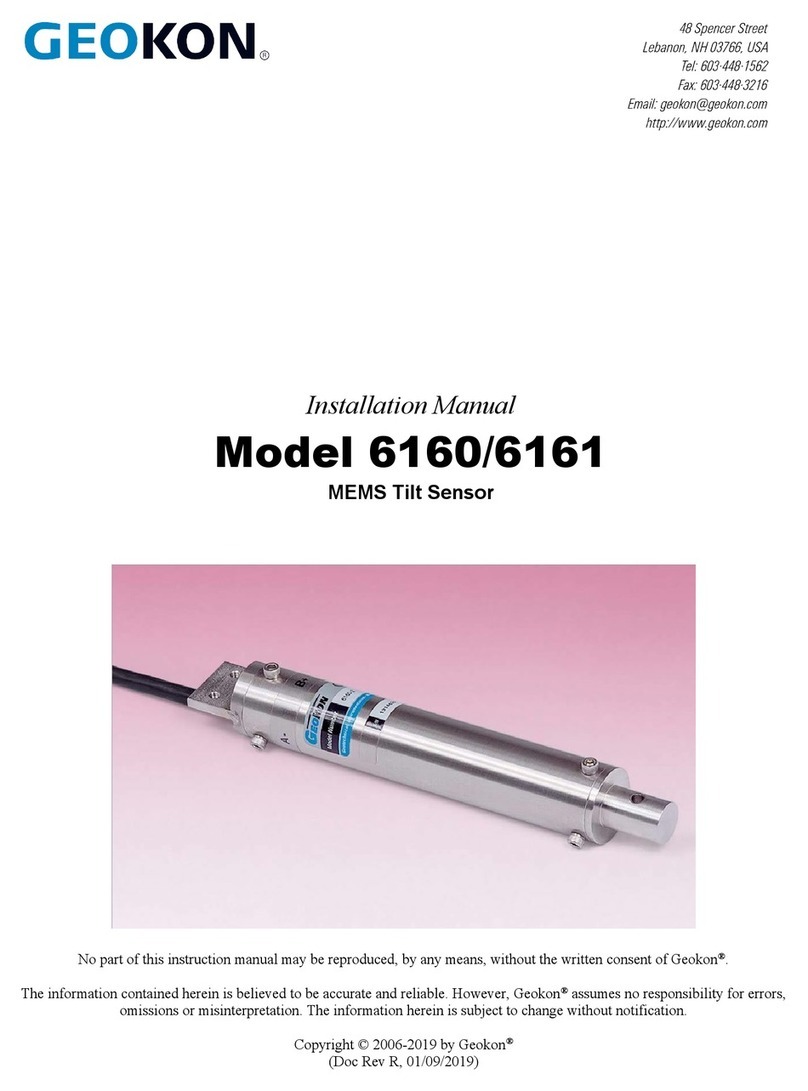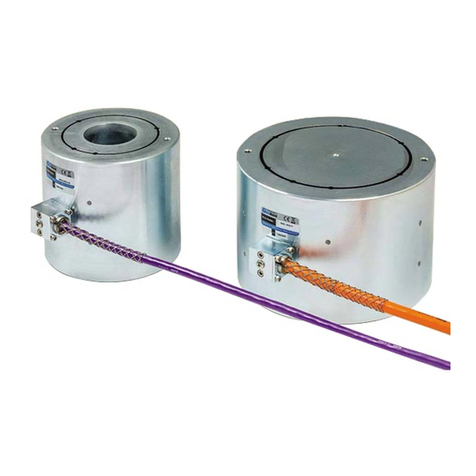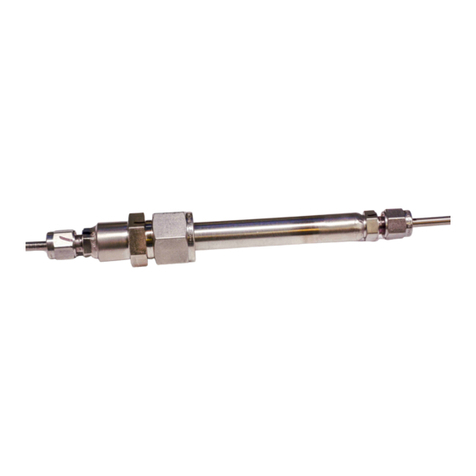
3
2. INSTALLATION PROCEDURES
2.1 Settlement System Installation
Installation generally requires a borehole to be drilled. The required borehole diameter is 75 mm
(three inches) or larger. Any casing, if used, should have an inner diameter greater than 70 mm
(two and a half inches). The recommended distance between the sensor and the reservoir for the
standard sensor range (seven meters) is three to five meters. The minimum spacing can be
smaller if the spacing exceeds three times the anticipated maximum settlement. Thus if the
anticipated maximum settlement is 0.5 meters, the sensor/reservoir spacing can be as close as
one and a half meters.
The Model 4600 Assembly is usually shipped with the liquid tube prefilled with de-aired liquid.
The liquid tube is of such a length to accommodate the spacing between sensor and reservoir
specified at the time of ordering. Measure the depth of the borehole and prepare a length of pipe,
(one inch water pipe is ideal), which will place the sensor at the desired elevation. (As previously
discussed, the elevation is normally from three to five meters below the surface, depending on
the anticipated settlement.)
Attach the sensor to the upper end of the pipe (the sensor normally has a matching thread built
into it). Tie a long piece of rope to the upper end of the pipe and lightly tape a grout pipe to the
lower end of the pipe. Lower the pipe into the borehole until it rests on the bottom.
Tremie full strength grout into the bottom 1.5 meters of the borehole. Pull the grout pipe up two
meters and tremie in a soft bentonite grout until the borehole is full.
If the hole is cased, the casing can be removed by completing the following: Tie the reservoir
and signal cable to the rope. Next, tie the rope to the top of the drill mast so that the casing can
slide over and around the reservoir and signal cable. The casing can now be removed.
4600 Settlement Systems are usually shipped with the reservoir completely filled with de-aired
liquid to ensure that there is no danger of air bubbles entering the liquid tube during shipment.
But, because there is a danger that temperature changes during shipment could cause pressure
changes sufficient to push the reservoir plug out of its housing and spill fluid, there is a small
diameter ’travelling tube’ connected to the reservoir plug. This ‘travelling tube’ is half-filled
with water and connects to the water in the reservoir keeping the pressure inside the reservoir at
the ambient atmospheric pressure during shipment no matter what the temperature.
To put the 4600 system into service it is necessary, first, to grip the Swagelok cap holding the
travelling tube and pull the reservoir plug out of the top of the reservoir, (the larger of the two
Delrin plugs). Suck 10 cc of liquid from the top of the reservoir using the syringe provided. (The
syringes provided have a capacity of 12 cc). Add a few drops of light oil to the surface of the
liquid to prevent evaporation. Push the reservoir plug back into place and remove the cap holding
the travelling tube. Remove the other Swagelok cap and connect the short copper U shaped tube
supplied, with fittings, to the top of the reservoir and the top of the desiccant chamber. Tighten
the Swagelok connectors per the instructions in Section 2.2.
Attach the settlement flange to the settlement plate using the bolts supplied.
